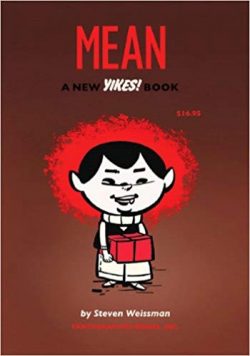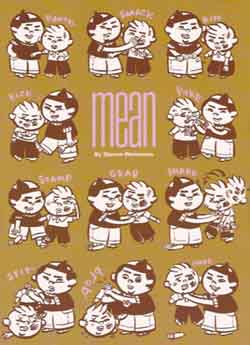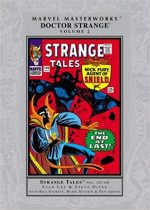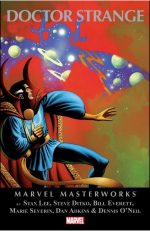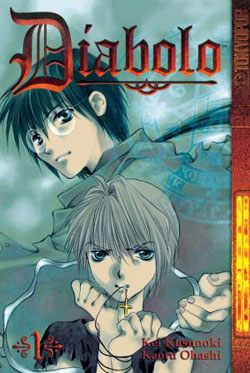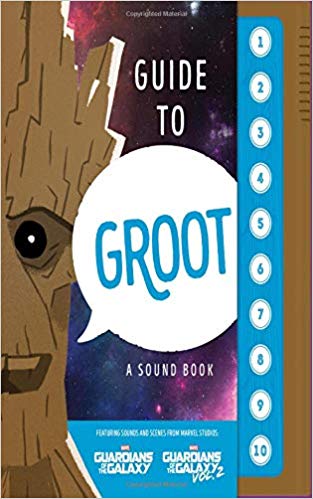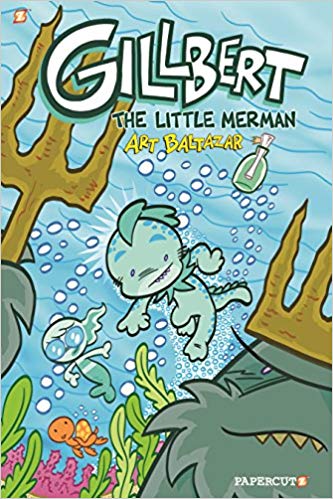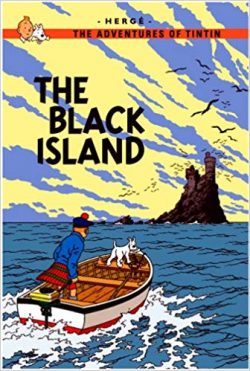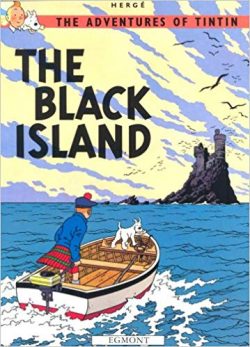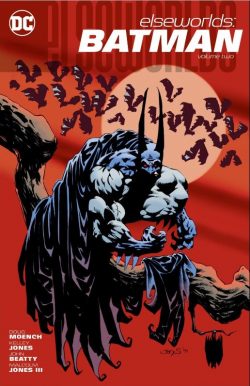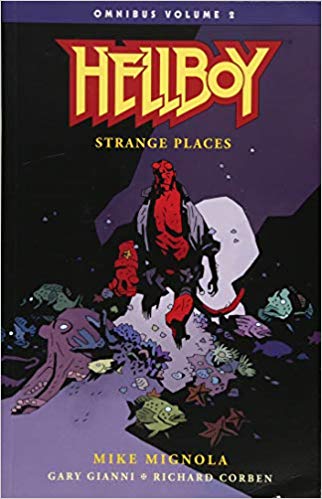
By Mike Mignola with Richard Corben, Gary Gianni, Dave Stewart & various (Dark Horse Books)
ISBN: 978-1-50670-667-2 (PB)Â Â Â Â Â Â Â Â Â Â Â Â Â Â Â Â Â Â Â Â eISBN: 978-1-50670-688-7
Win’s Christmas Gift Recommendation: Spooky, Sensational, Unmissable… 9/10
Hellboy was first seen 25 years ago in the 1993 San Diego Comic Con programme. Many Happy Returns, Big Red.
After the establishment of the comicbook direct market system, there was a huge outburst of independent publishers in America and, as with all booms, a lot of them went bust. Some few, however, were more than flash-in-the-pans and grew to become major players in the new world order.
Arguably, the most successful was Dark Horse Comics who fully embraced the shocking new concept of creator ownership (amongst other radical ideas). This concept – and their professional outlook and attitude – drew a number of big-name creators to the new company and in 1994 Frank Miller & John Byrne formally instituted the sub-imprint Legend for those projects major creators wanted to produce their own way and at their own pace.
Over the next four years the brand counted Mike Mignola, Art Adams, Mike Allred, Paul Chadwick, Dave Gibbons and Geof Darrow amongst its ranks; generating a wealth of superbly entertaining and groundbreaking series and concepts.
Unquestionably the most impressive, popular and long-lived was Mignola’s supernatural thriller Hellboy.
As previously cited, the monstrous monster-hunter debuted in San Diego Comic-Con Comics #2 (August 1993) before formally launching in 4-issue miniseries Seed of Destruction (with Byrne scripting over Mignola’s plot and art). Colourist Mark Chiarello added layers of mood with his understated hues. Once the fans saw what was on offer there was no going back…
This new trade paperback and digital series re-presents the succession of long form tales and miniseries that followed in omnibus volumes, accompanied by a companion series of tomes featuring all the short stories. I’ll get around to them too before much longer…
This second stellar select starring the Scourge of Sheol collects Hellboy: Conqueror Worm, Hellboy: Strange Places, Hellboy: Into the Silent Sea plus ‘Right Hand of Doom’ and ‘Box Full of Evil’ from Hellboy: The Right Hand of Doom and the lead tale from companion volume BPRD: Being Human.
What You Need to Know: on December 23rd 1944 American Patriotic Superhero The Torch of Liberty and a squad of US Rangers interrupted a satanic ritual predicted by Allied parapsychologist Professors Trevor Bruttenholm and Malcolm Frost.
They were working in conjunction with influential medium Lady Cynthia Eden-Jones. Those stalwarts were waiting at a ruined church in East Bromwich, England when a demon baby with a huge stone right hand appeared in a fireball. The startled soldiers took the infernal yet seemingly innocent waif into custody.
Far, far further north, off the Scottish Coast on Tarmagant Island, a cabal of Nazi Sorcerers roundly berated ancient wizard Grigori Rasputin whose Project Ragna Rok ritual seemed to have failed. The Russian was unfazed. Events were unfolding as he wished…
Five decades later, the baby had grown into a mighty warrior engaging in a never-ending secret war: the world’s most successful paranormal investigator. Bruttenholm spent years lovingly raising the weird foundling whilst forming an organisation to destroy unnatural threats and supernatural monsters – The Bureau for Paranormal Research and Defense. “Hellboy†quickly became its lead agent.
Moreover, as the decades of his career unfolded, Hellboy gleaned tantalising snatches of his origins, hints that he was an infernal creature of dark portent: born a demonic messiah, somehow destined to destroy the world and bring back ancient powers of evil. It is a fate he despises and utterly rejects…
Answers began seeping out in ‘The Right Hand of Doom’ (originally seen in in Dark Horse Presents Annual 1998 in macabre monochrome and coloured here by Dave Stewart) as the B.P.R.D. big gun meets a priest with a connection to his arrival on Earth during WWII.
Adrian Frost carries an ancient document depicting Hellboy’s arcane stone appendage and offers to trade it for the true story of his terrestrial nativity and subsequent career…
The cleric learns how a Lord of Hell and an earthly witch spawned a child of diabolical destiny and how the grand plan was derailed by destiny and a human-reared child who moved Heaven and Hell to live his own life…
That fascinating background was expanded in 2-part 1999 miniseries ‘Box Full of Evil’ when Hellboy and agent associate Abe Sapien return to modern-day Britain to assess a mystic burglary.
Old antagonist Igor Bromhead has used his magic to steal the ancient metal coffer Saint Dunstan used to imprison a devil, but by the time the occult operatives find him the vile plotter has opened the box and sold on its contents to debauched Satanists Count Guarino and Countess Bellona.
Their facile joy is short-lived as the dubious double-dealer takes possession of the cask’s true treasure. In return for paltry wealth and appalling knowledge, the liberated demon shares the secret name and true nature of Hellboy as well as his Abysmally-ordained destiny.
It even helps Igor ambush the investigator, usurping both Hellboy’s true power and ascribed role in the destruction of the universe…
With that misappropriated magical might, the demon starts to end Creation but has not reckoned on the incredible will and sheer bloody-mindedness of the paranormal troubleshooter, nor those other ancient powers of the Earth who have no intention of dying before their appointed times…
This astounding tale of hell-bent heroism and cosmic doom is then followed by a 4-page epilogue which offers dark portents of further trials for the monster who will always be his own man…
Written by Mignola & illustrated by comics legend Richard Corben, ‘Being Human’ comes from 2011 and details how Hellboy and former foe-turned-new-recruit Roger the Homunculus debate relative ethics and personal worth whilst calamitously battling a necromantic witch and her ghastly zombie slave…
A chronological reversion to earlier graphic terrors and grave wit unleashes the award-winning 4-issue miniseries ‘Hellboy: Conqueror Worm’ (originally seen from May to August 2001); featuring earth-shattering battles, cosmic revelations and a crucial turning point in the life of the world’s greatest supernatural superhero.
It begins on March 20th 1939 when Nazi stronghold Hunte Castle is invaded by a select force of American soldiers, intent on disrupting the plans of “Nazi Einstein†Ernst Oeming.
Deep within the Austrian alpine fortress, fanatical scientists and occultists are counting down to Earth’s first space shot when the crack unit – led by two-fisted mystery man Lobster Johnson – storm in with explosive repercussions…
Sixty-one years later the ruins are the scene of careful scrutiny by the B.P.R.D.
NASA telescopes have spotted a Nazi-emblazoned capsule rocketing back to Earth, clearly a result of that clandestine commando mission’s ultimate failure. With the fallen Reich’s past track record of supernatural surprises, Director Tom Manning wants Hellboy and Roger to see what lost secrets they can uncover.
Guiding them is a local girl with useful connections. Lisa Karnstein grew up near the ruins and now works for the Austrian Secret Police…
Before they finally embark, Hellboy endures a distasteful interview with his new boss. The B.P.R.D. bigwigs have placed explosives inside Roger – “just in case†– and require the crimson colossus to carry the detonator with him at all times…
Furious but committed, Hellboy storms off, but soon the cautious trio are nearing the summit and ominous ruins. Their way is briefly barred by an enigmatic figure begging them to turn back from the haunted site, but it quickly succumbs to Hellboy’s already short fuse and thundering fists.
Before long they are picking their way towards the entrance when shots are fired from ambush and Roger plunges off the side of the mountain…
Angrier than ever, Hellboy smashes into the derelict building to discover one of his oldest enemies in charge of a restored Nazi mission control suite.
Herman Von Klempt was there when Oeming took off for the stars in 1939 and in the years since has become a major menace to civilisation through his macabre transplant experiments and cybernetic killer-apes. The latest incarnation of the latter is what smashes Hellboy into unconsciousness…
When the investigator comes to he is trussed into a typically sadistic torture device. As he screams in agony his Nazi nemesis is smugly boasting of the fruition of decades of planning. He is also congratulating his devoted mole within the B.P.R.D. operation…
Elsewhere, the earthly remains of Lobster Johnson make contact with a presumed-lost B.P.R.D. agent and begins a desperate counterstrike which might be mankind’s only chance of survival, even as Von Klempt’s technicians guide the vintage space capsule to a safe descent…
With Hellboy free and liberally wreaking havoc amidst the mad scientist’s forces, a third faction then enters the fray, offering crucial intelligence into the demon-foundling’s true origins and early life.
Ignoring the many ghosts infesting the castle, he also reveals how the plan was never to send a living human into space, but to deliver a corpse which would be inhabited by an ancient, arcane monstrosity from antediluvian prehistory: a creature whose reign on Earth would signal the end and obliteration of humanity…
Before dying he finally offers a meagre weapon to oppose the beast, but it seems utterly inconsequential compared to the hideous transformative majesty of the chthonic horror Von Klempt calls the Conqueror Worm…
With all sides in play the supernatural action goes into Armageddon overdrive as Hellboy and his allies strive to destroy the creeping evil and its insane acolytes. Enemies fall and allegiances shift from moment to moment, but when the gift-weapon is shattered only the greatest sacrifice imaginable can halt the monster’s domination.
Most tellingly, even after Hellboy’s greatest, most important triumph, his anger at mankind’s madness and venality force him to make the most important decision of his unconventional life…
Wrapping up the spectral sideshow is an ominous Epilogue revealing how a convocation of the Weird Warrior’s most dangerous foes results in one less archenemy but more trouble in store…
‘The Third Wish’ was first released as a 2-issue micro-series between July and August 2002 and reveals how, at the bottom of the sea, three mermaid sisters implore the mighty Bog Roosh to grant their wishes.
Her acquiescence comes at a great cost however: the marine maidens must somehow hammer a mystic nail into the head of her great enemy…
Hellboy is currently in Africa, estranged from the B.P.R.D. but still encountering mystic menaces that need stopping. Eventually he stops to listen to the tales of witch-man Mohlomi and is soon under the spell of the tale-teller. Lapsing into a deep sleep, he dreams of lions who foretell his future…
Hellboy awakens to find they have somehow moved to the coast. When Mohlomi tells him the ocean is calling, the baffled but resigned parapsychologist enters the roaring surf and is promptly dragged under the waves, protected only by a bell-charm the sorcerer has given him…
Attacked by sea beasts and the three sisters, Hellboy is overcome as soon as he lets go of the jingling trinket and is helpless to prevent them driving in the damned nail…
Bound and helpless in the Bog Roosh’s power, Hellboy can only watch as the sisters are given their hearts’ desires and – in the usual manner of such things – suffer the cruel consequences of double-dealing demonry.
Wise in such matters, Hellboy tries to help the third mermaid avoid her fate but is powerless to prevent the sea-witch granting the last wish. His kind act touches the mermaid’s heart and – whilst the witch tries to dismember Hellboy and all the powers of The Pit stand helpless to prevent the end of all their hopes and dreams – she sneaks back and frees him.
Released to vent his considerable anger, Hellboy ends the Bog Roosh and decimates her power, but is ultimately unable to save his saviour…
‘The Island’ debuted in June and July 2005 and signalled the grand finale of the First Chapter in Hellboy’s life…
Hellboy wades ashore in a drear limbo of shattered ships and broken vessels. Anxious but resolved, he trudges on and joins a motley assemblage of mariners in a protracted boozing session, only later realising he has been drinking with dead men.
A further shock to his system is delivered by old enemy Hecate, who appears gloating and glad that the Bog Roosh failed to kill him. As long as Hellboy lives she can still corrupt or conquer him…
Shunning the Goddess of the Damned, Hellboy trudges on, entering a dilapidated castle where he is sucked into an ancient vision offering potential clues to his past and future. Now though, it only results in him battling ferociously with little success against yet another gargantuan monster…
He awakes an unknowable time later on a dry, dusty plain with Mohlomi who offers yet more occluded, oblique advice before a revived ghost joins the conversation with the tale of his mortality in ancient Tenochtitlan.
This story of life, death and resurrection coincidentally reveals the secret history of creation, the inevitable end of mankind, what will follow and – most terrifyingly – the truth about Hellboy’s stone hand and his intended role in the ghastly Grand Scheme of Cosmic Doom…
Wrapping up the spectral showcase is another ominous Epilogue as arcane and infernal powers confer over what the revelations mean to Hellboy. The Fated One is now armed with knowledge but is only drifting closer to his future, no matter how hard he struggles to turn away from it…
This second comics compilation concludes with the inclusion of 2017’s Original Graphic Novel ‘Into the Silent Sea’, co-written by Mignola & Gary Gianni, with the latter fully illustrating the tale in his usual lush classicist style.
Sailing through a Sargasso of wrecked ships, Hellboy is drawn into a bizarre time-bending miasma and is captured by the crew of an 18th century scientific exploration vessel. At least so it first seems…
Once he learns that the abusive Captain is merely the flunky of the mysterious Lady, whose obsessive search for deeper cosmic truths knows no bounds, Hellboy knows bad things are coming. Once Heca Emen Raa, the Serpent from the Beginning of the World answers her insane call, he realises it’s a case of every man for himself and the devil will most certainly take the hindmost…
And even after the thrashing surf settles, there’s one more horrifying shock in store…
Rounding out this apocalyptic endeavour is a stunning Hellboy Sketchbook Section which includes behind-the-scenes insights, author commentary, character designs, breathtaking drawings and roughs detailing the development and visual evolution of the beasties and bad guys populating the stories to sweeten the pot for every lover of great comics art.
Baroque, grandiose, alternating suspenseful slow-boiling tension with explosive spectacle, Hellboy mixes apocalyptic revelation with astounding adventure to enthral horror addicts and action junkies alike. This is another cataclysmic compendium of dark delights you simply must have.
Hellboy™ Strange Places © 1993, 2018 Mike Mignola. Hellboy, Abe Sapien, Liz Sherman and all other prominently featured characters are trademarks of Mike Mignola. All rights reserved.
